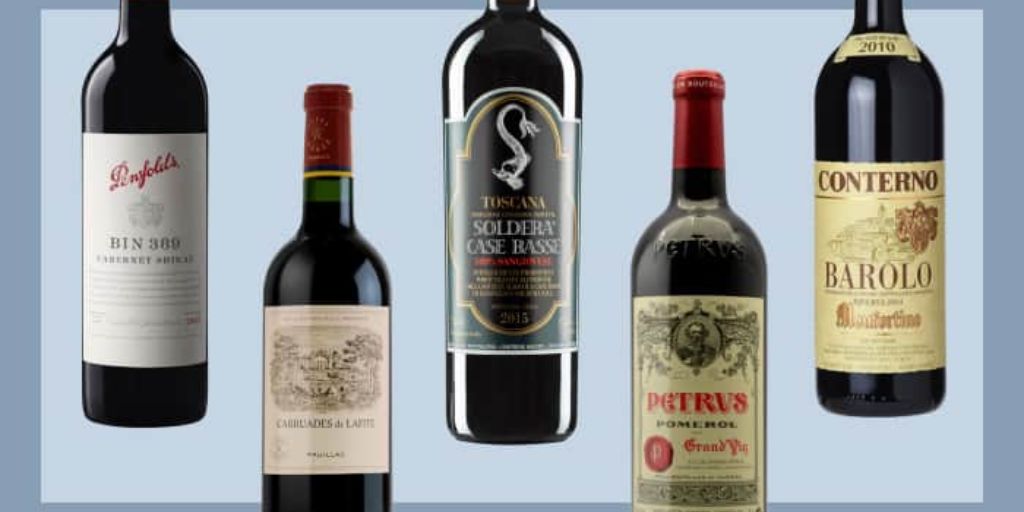Wine lovers who are watching their sugar intake no longer have to sacrifice taste or quality. Whether you’re managing your blood sugar, reducing calories, or simply embracing a cleaner lifestyle, low-sugar wines offer a perfect balance of flavor and health consciousness.
These wines are not only naturally lower in sugar, but they also maintain complexity and richness that can satisfy both casual drinkers and seasoned enthusiasts.
In this guide, we’ll break down what makes a wine low in sugar, which types to look for, and how to choose bottles that align with your wellness goals—without giving up on enjoyment.
What Does “Low-Sugar” Mean in Wine?
Sugar in wine comes primarily from the natural sugars in grapes. During fermentation, yeast consumes these sugars and converts them into alcohol. The more complete the fermentation, the less residual sugar (RS) remains in the wine.
-
Dry wines typically contain less than 4 grams of sugar per liter.
-
Off-dry wines may have between 4–12 grams per liter.
-
Sweet wines can exceed 30+ grams per liter.
For reference:
-
A 5 oz glass of dry red wine has about 0.9 grams of sugar.
-
A 5 oz glass of sweet dessert wine can contain 8–20+ grams of sugar.
Health-conscious drinkers usually aim for wines with under 2 grams of sugar per glass.
Top Low-Sugar Wine Types
1. Dry Red Wines
Red wines typically undergo full fermentation, leaving little sugar behind. Choose varieties labeled “dry” to ensure minimal residual sugar.
Best Low-Sugar Red Wines:
-
Cabernet Sauvignon: Bold, rich, and tannic. A classic dry red.
-
Pinot Noir: Light-bodied, food-friendly, and lower in sugar and alcohol.
-
Merlot: Smooth and approachable with a dry finish.
-
Syrah/Shiraz: Dry with spice and dark fruit, especially in Old World versions.
Tip: European reds (France, Italy, Spain) often have less sugar than New World reds due to stricter production standards.
2. Dry White Wines
Whites can be trickier—some appear dry but hide higher sugar content. Stick to dry styles and cool-climate producers for the best low-sugar options.
Best Low-Sugar White Wines:
-
Sauvignon Blanc: Crisp, zesty, and one of the driest whites available.
-
Albariño: Light and citrusy, mostly from Spain or Portugal.
-
Pinot Grigio: Especially dry versions from Northern Italy.
-
Chablis (unoaked Chardonnay): From Burgundy, France, known for its mineral-driven dryness.
Avoid: Some Chardonnays and Rieslings can be off-dry or sweet, depending on region and style.
3. Sparkling Wines (Brut Nature / Extra Brut)
Sparkling wine categories vary significantly in sugar. Look for bottles labeled:
-
Brut Nature (0–3 g/l residual sugar)
-
Extra Brut (0–6 g/l)
-
Brut (0–12 g/l)
These are the driest sparkling wines and among the lowest in sugar.
Best Picks:
-
Cava Brut Nature (Spain): Dry, budget-friendly, and crisp.
-
Champagne Extra Brut: Elegant and refreshing with minimal sugar.
-
Prosecco Brut: Less sweet than Prosecco labeled “Extra Dry” (which is actually sweeter).
Watch Out: Labels like “Demi-Sec” and “Douce” indicate significantly more sugar.
4. Dry Rosé Wines
Rosé can swing from bone dry to quite sweet. Aim for rosés from Provence (France), which are known for being low in sugar and high in acidity.
Low-Sugar Rosé Options:
-
Provence Rosé: Pale pink, dry, and delicate.
-
Spanish Rosado: Often based on Grenache or Tempranillo, usually dry.
-
Dry Pinot Noir Rosé: Fruity but with very little sugar.
Avoid mass-market rosés with terms like “blush,” “white Zinfandel,” or “sweet rosé.”
Labels and Terms to Look For
Navigating wine labels can be confusing. Here’s a cheat sheet of what to look for when shopping for low-sugar wines:
-
Dry: The most important term, signaling minimal sugar.
-
Brut Nature / Extra Brut: Key for sparkling wines.
-
Sec / Trocken: On French or German labels, these terms mean dry.
-
Kabinett (Germany): Can be dry, but check specifics; Spätlese and Auslese tend to be sweeter.
Pro tip: Check the Alcohol by Volume (ABV). Lower alcohol doesn’t always mean lower sugar, but wines between 11.5%–13.5% ABV are often dry. Very low ABV (<10%) may indicate retained sugars.
Best Practices for Selecting Low-Sugar Wines
1. Buy from Reputable Regions and Producers
Old World regions—like Bordeaux, Rioja, or Chianti—generally focus on drier styles. These producers often value balance and tradition over sweetness.
2. Ask for a Tech Sheet
When in doubt, ask for a wine’s technical sheet. It’ll list residual sugar content, which helps you compare options directly.
3. Stick with Natural or Organic Wines
While “natural wine” isn’t a guarantee of low sugar, many small producers use minimal intervention and full fermentation techniques that result in drier wines.

4. Avoid Bulk Bottles
Inexpensive mass-market wines sometimes contain added sugars to make them more palatable. They may not disclose these additions, so stick to trusted producers and avoid overly sweet descriptors.
Low-Sugar Wine Brands to Try
-
FitVine: Markets itself as fitness-friendly with lab-tested low sugar levels.
-
Dry Farm Wines: Curates natural, low-sugar, low-alcohol wines from around the world.
-
Avaline (by Cameron Diaz): Organic wines with transparent ingredient and sugar disclosures.
-
Scout & Cellar: Offers “clean-crafted” wines without added sugar.
Conclusion
Low-sugar wines offer the best of both worlds: mindful drinking without sacrificing taste. By focusing on dry reds, crisp whites, and well-made sparklers, health-conscious wine lovers can enjoy a glass (or two) without overloading on sugar. The key is to understand labeling, know what regions and styles to trust, and prioritize quality over quantity.
Whether you’re cutting carbs, managing sugar for health reasons, or just looking to enjoy wine more consciously, there’s a delicious bottle waiting for you—with less sugar and all the satisfaction.


